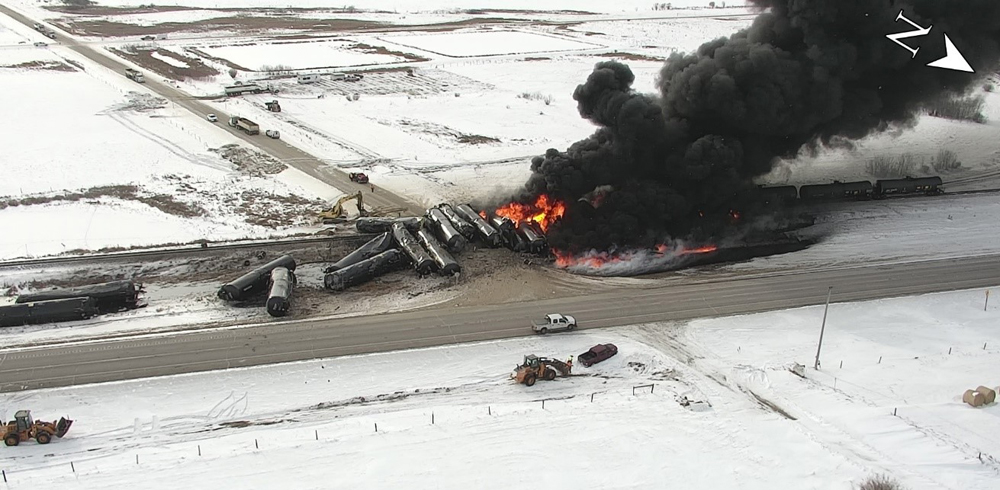
WINNIPEG, Manitoba — Failure of a plug rail joint, installed about a week earlier, likely led to the derailment and fire involving a Canadian Pacific crude oil unit train near Guernsey, Saskatchewan, in February 2020, the Transportation Safety Board of Canada determined in a final investigation report released Friday (June 7).
The Feb. 6 incident — the second involving a CP train of crude near Guernsey in a two-month period — led to new speed restrictions for hazardous-material trains in Canada [see “Canadian government orders speed restrictions …,” Trains News Wire, Feb. 6, 2020]. Thirty-two cars derailed, spilling approximately 1.75 million liters (462,300 gallons) of crude oil, which ignited, closing a highway and leading to the evacuation of about 85 people. No one was injured.
The eastbound train of two head-end locomotives, 104 tank cars of crude oil, two buffer cars, and a rear distributed power unit, was en route from Rosyth, Alberta, to Noyes, Minn., when it derailed while traveling at about 44 p.m. at mile 43.63 at the Bloomfield Road grade crossing on the Sutherland Subdivision near Guernsey. The 31st through 62nd cars derailed, with 30 of them breached, resulting in a major fire. About 300 feet of track was destroyed extending east from the east switch of a wye for a spur to a nearby potash mine.
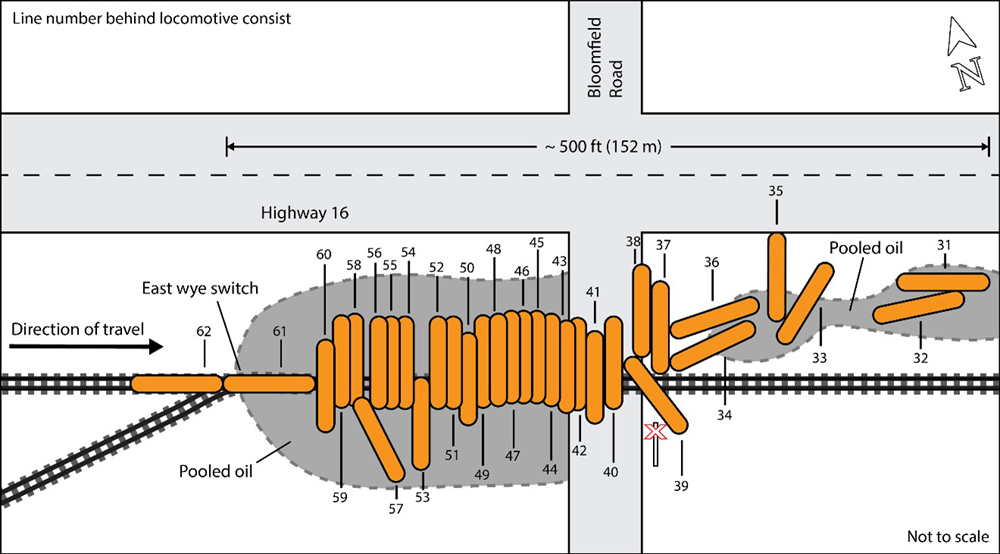
The track where the incident occurred had been inspected regularly, including visual inspections daily on the eight days prior to the derailment. A 22-foot section of 115-pound plug rail had been installed on the track’s north rail on Jan. 14 to address a break near the east switch of the wye for the potash spur. However, on Jan. 29, inspectors noticed that plug rail had not received the required ultrasonic inspection; it was replaced late in that evening in conditions that included temperatures of minus-5 degrees Celsius (23 degrees Fahrenheit), with a wind chill of minus-10 Celsius. The TSB found the replacement was done by a team that did not routinely replacement rail and was working under demanding conditions, “both of which likely contributed to the installation of a poorly supported rail joint.” That likely played a part in the joint failure.
The TSB noted several similarities between the Feb. 6 derailment and the Dec. 9, 2019, incident just 5 miles to the west [see “Broken rail led to 2019 Canadian Pacific oil train derailment and fire …,” News Wire, Oct. 6, 2023]. It also notes that “substantial safety action” resulted from the two incidents. The TSB issued two safety advisories, one regarding train speeds for trains carrying hazardous materials and one on track standards for hazardous-material routes. Transport Canada responded with a series of new rules on train speeds and track. And Canadian Pacific developed a system to detect rail breaks in non-signaled territory [see “Canadian Pacific deploying new broken-rail detection system …,” News Wire, Oct. 27, 2020], increased its fleet of autonomous track geometry cars, and undertook substantial trackwork on the Sutherland Subdivision in 2020.






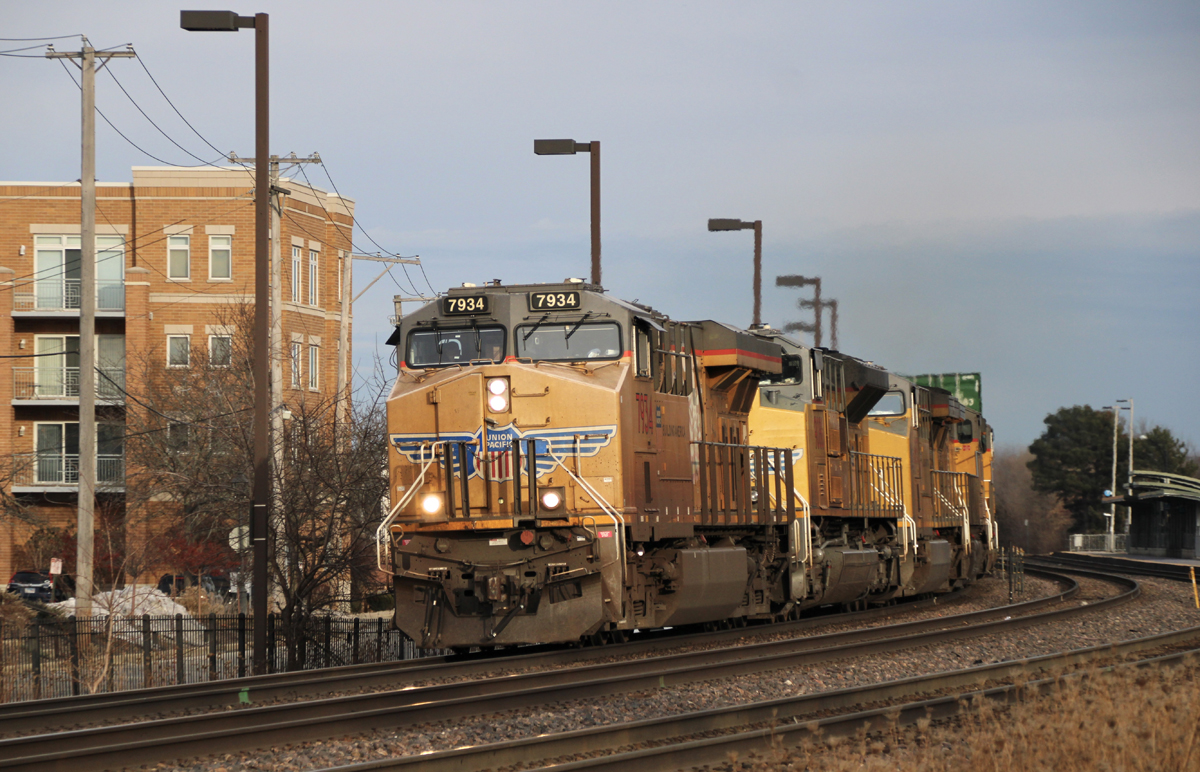

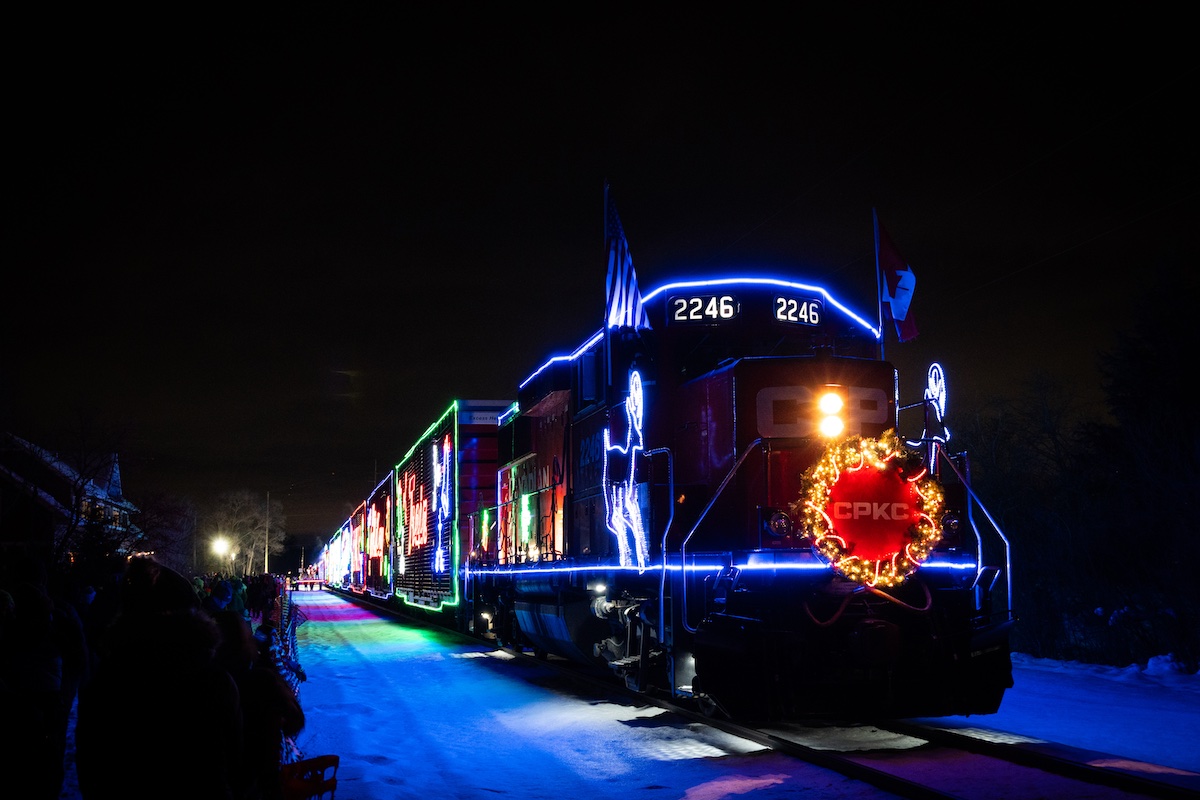
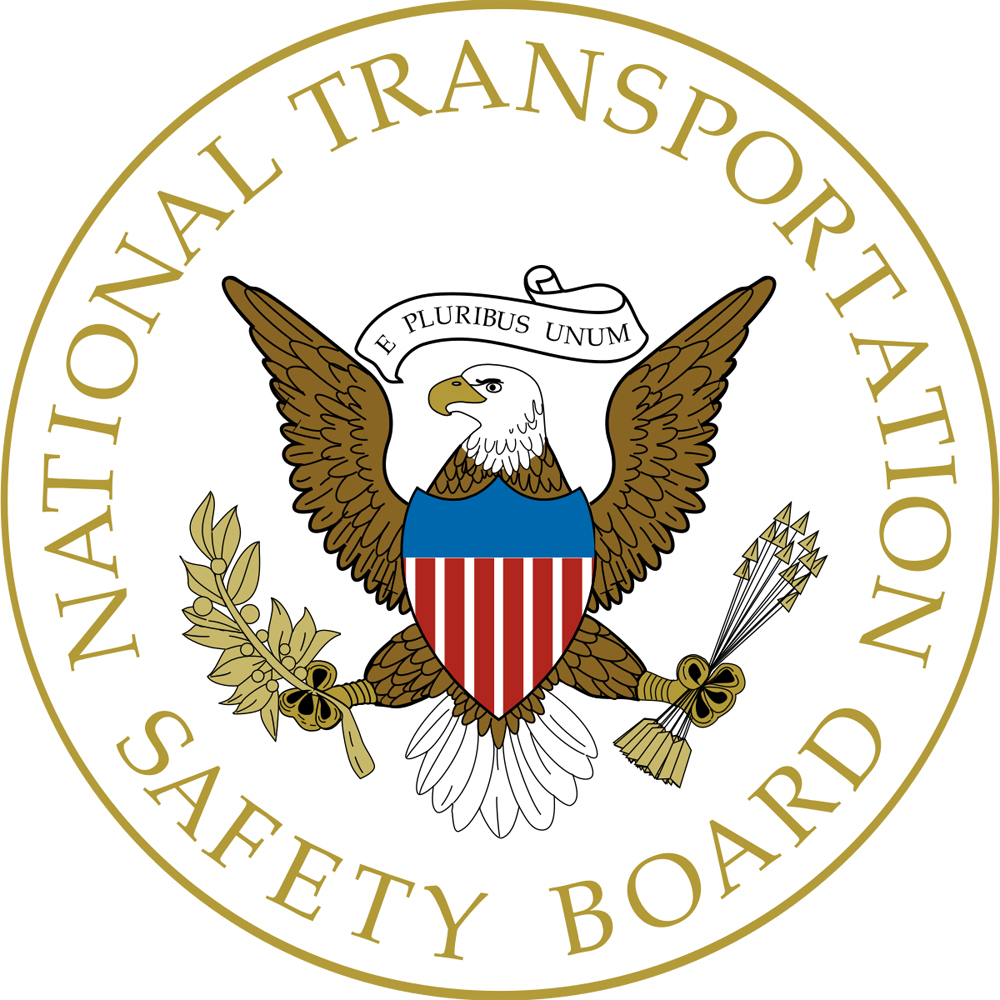




At the time, most people were getting a little paranoid about oil train derailments in the area. So it all comes down to the wrong crew being asked to do something they don’t normally do, under duress in bad weather.
I would like to hear from the TSB exactly why CP had the wrong crew twice in as little as a month. Where was the starting team? Why didn’t the unions object to the work request being outside their scope of work?